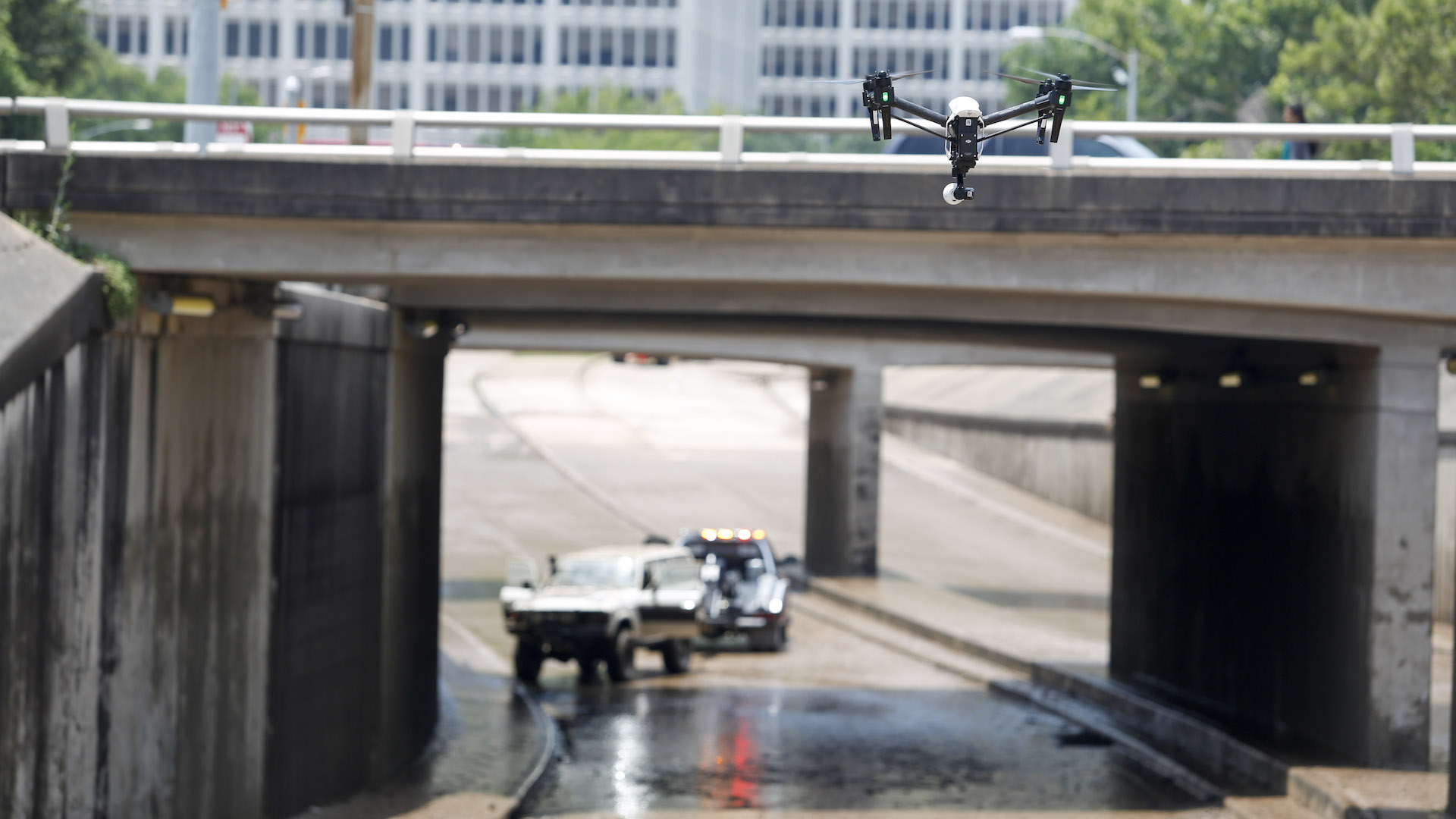

We may earn revenue from the products available on this page and participate in affiliate programs. Learn more ›
The Texas Department of Public Safety (DPS) in Austin has launched a new drone program focused on highway crash scene analysis, search and rescue, emergency assistance, crime-scene monitoring, and more. According to San Antonio Express-News, the department spent approximately $70,000 in the past few months on 17 unmanned aerial vehicles, the most expensive of which is Aeryon’s SkyRanger. The SkyRanger is equipped with a sophisticated camera, has a flight time of 50 minutes, and costs $48,000. Let’s have a look at the drone program itself: equipment, intentions, and concerns.
DPS spokesman Tom Vinger said the aforementioned SkyRanger drone will largely be relegated to highway patrol missions, like reconstructing crash scenes using its extended flight time and high-tech camera capabilities. Meanwhile, the rest of this newly-acquired fleet of UAVs will be deployed during various public safety missions across the state that could benefit from aerial vantage points.
According to last Thursday’s DPS press release, employing unmanned aerial systems instead of manned counterparts is not only often less costly, but far less dangerous, as it keeps actual people out of harm’s way. “The UAS is an excellent tool to deploy when DPS aircraft are unavailable; if a mission is too dangerous for manned aircraft to be deployed; or when deemed more cost effective than conventional aircraft,” the release stated. Most recently, we’ve seen a shift from traditional helicopter use toward drones in news-gathering services increase significantly. It only makes sense for public safety sectors to do the same whenever it makes financial and practical sense.
Of course, this program will operate by the book. Any DPS employees utilizing a UAS have to be certified drone pilots by the Federal Aviation Administration and complete at least 10 hours of training. Three DPS employees have reportedly already received the necessary training, and are fully authorized to use the department’s new gear during the daytime. Regarding the number of drones acquired, the press release states that eventually, the department may acquire more than 17. Time will tell, and purchases will be made accordingly.
This is a clear shift from years past when law enforcement and other institutions were being hampered by stricter domestic drone laws. These days, we’re seeing police departments across the country acquire UAVs, drone-corridors being established, and federal regulations being loosened. As Vinger himself stated, “the regulatory environment has greatly improved.”
Stay tuned, as we track how drones are aiding Texas officials in saving people’s lives, and if this modern aerial tool of ours is as promising as we think it is.
